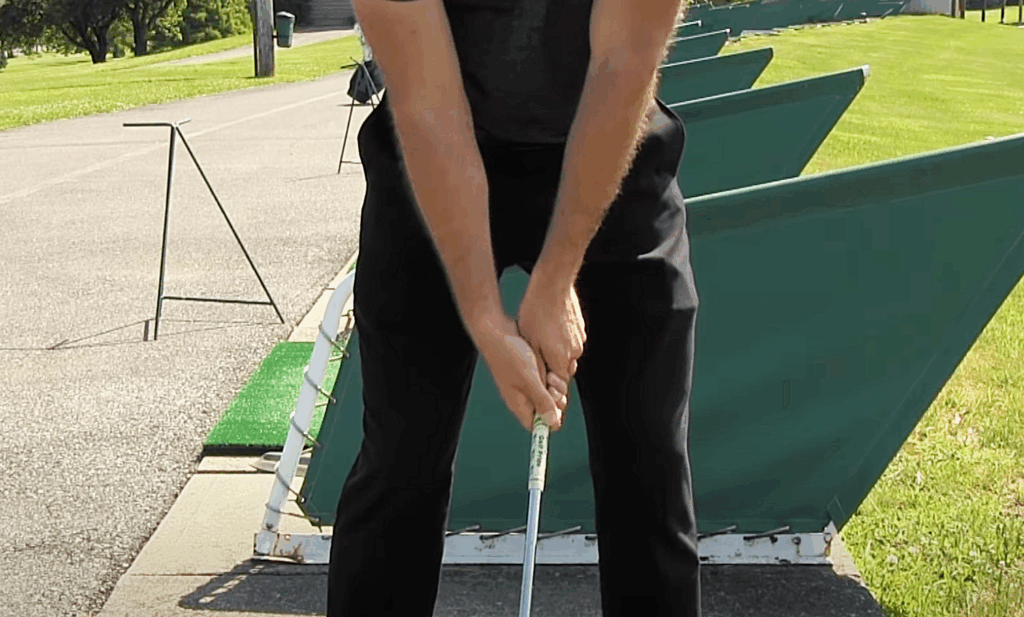
Key Takeaways
- Understanding how to grip a golf club is fundamental for performance.
- Choosing the right grip type can significantly influence your swing.
- A proper grip pressure enhances control and consistency.
- Identifying and correcting common grip mistakes can improve your game.
Understanding the Basics of a Golf Grip
A golf grip refers to the way a golfer holds the club. This is essential for a successful swing, and it plays a critical role in controlling the ball’s flight and ensuring consistent results.
Here are the basics to understand about your grip:
- Stabilization: A proper grip helps stabilize the clubhead, which impacts swing tempo and overall golf performance.
- Influence on Ball Flight: Your grip can determine how well you hit the ball, affecting the trajectory and spin.
For further details, check out these sources: Golf Distillery and Keiser University College of Golf.
Golf Grip Types
Choosing the right type of grip is essential for developing a successful golf swing. Here are three popular golf grip types:
Interlocking Grip
- Description and Benefits: The interlocking grip is when the fingers of both hands are woven together. This method creates a secure hold that is particularly beneficial for golfers with smaller hands. By interlocking your fingers, you create a more controlled grip without excessive pressure.
- Tips for Use:– Ideal for players needing a stable grip.– Helps maintain control, especially during powerful swings.
Refer to Keiser University College of Golf and Golf Distillery for more information.
Overlap Grip
- Explanation and Advantages: The overlap grip, also known as the Vardon grip, involves placing the right pinky between the left index and middle fingers (for right-handed golfers). This grip reduces tension in the hands and improves the feel of the club.
- Scenarios and Player Types:– Preferred by professionals and players with larger hands.– Enhances the natural flow of the swing, creating better ball striking.
Check out more from Hackmotion.
Baseball Grip
- Definition and Characteristics: The baseball grip (or ten-finger grip) allows all ten fingers to touch the club. This grip is often more comfortable for beginners, as it feels natural and requires less dexterity.
- Insights for Beginners:– Appealing due to its simplicity.– While it provides comfort, it may lead to less precise shots in the long run.
Visit Keiser University College of Golf for more details.
Strong vs Weak Golf Grip
Understanding the difference between a strong grip and a weak grip is essential for controlling your shots:
- Strong Grip: A strong grip points the clubface more to the right, often resulting in a draw or hook. This position encourages players to hit the ball more consistently but could cause hooks if not balanced correctly.
- Weak Grip: Conversely, a weak grip positions the hands for an open clubface, potentially leading to fades or slices.
- Implications on Swing Trajectory and Ball Control:– Strong grips can produce more accurate shots.– Weak grips help manage slices but may lead to inconsistency.
- Advice on Grip Selection: Assess your natural swing tendencies and adjust your grip type accordingly. For instance, if you often slice, try a stronger grip.
For a deeper dive into this topic, explore Hackmotion.
Golf Grip Pressure Points
Controlling your grip pressure is another critical component of how to grip a golf club. Here’s what you need to know:
- Importance of Grip Pressure: Proper grip pressure is vital for maintaining control and consistency in your swing. Too much pressure can create tension, negatively impacting your performance.
- Ideal Pressure Points:– Focus on applying even pressure with the last three fingers of each hand.– Avoid excessive pressure from the thumbs; practice with a light touch for better control.
- Tips for Maintaining Pressure:– Grip the club lightly to enhance swing consistency.– Concentrate on using your fingertips to hold the club rather than your palms.
For more information, visit Hackmotion.
Common Golf Grip Mistakes
Even the best golfers make common golf grip mistakes. Here’s a look at some frequent errors:
- Frequent Mistakes: These include gripping the club too tightly, misaligning hands, and using the wrong grip size. Such mistakes can lead to poor performance and inconsistent shots.
- Solutions and Tips:– Practice various grips to find what’s comfortable.– Ensure proper hand alignment and use grips that aid in pressure distribution.
- Practice and Consistency: Regular practice is essential to develop a reliable grip that enhances overall performance.
For insights on avoiding common mistakes, refer to Keiser University College of Golf and Golf.com.
Conclusion
Mastering how to grip a golf club is fundamental for achieving better control and consistency. We’ve explored various grip types, how to manage grip pressure, and how to correct common mistakes. Encouraging readers to practice different grips and remain aware of their grip pressure can make a significant difference in their game.
For those looking to enhance their golf skills, consider checking out additional resources such as instructional videos or professional lessons. These tools can provide tailored guidance on grip techniques that suit individual playing styles and needs. Remember, a solid grip is the first step towards improving your overall game!
- For more tips on how to choose the right golf clubs for beginners, refer to How to Choose Golf Clubs for Beginners: A Complete Guide for 2025.
- Those focusing on improving their game can benefit from reading Golf Tips for Beginners: How to Improve Your Swing in 2025.
- If you’re interested in learning more about golf training aids, check out Lower Your Scores: The Ultimate Guide to the Best Golf Training Aids, Featuring the Best Putting Training Aids of 2025.
- Lastly, for tips specifically aimed at golf club fitting, visit Golf Club Fitting: The Key to Improving Your Handicap.
All these resources can provide crucial support to golfers at different stages of their journey.
Frequently Asked Questions
What grip type is best for beginners?
The baseball grip is often recommended for beginners as it feels more natural and comfortable.
How important is grip pressure?
Grip pressure is vital; too much tension can lead to poor swings, while too little could affect control. Finding an ideal balance is key.
Can grip style affect ball flight?
Yes, the grip style can significantly affect how the ball flies, impacting spin and direction.
How do I know if my grip size is correct?
The correct grip size should feel comfortable without excessive pressure; you should be able to hold it securely without straining.
